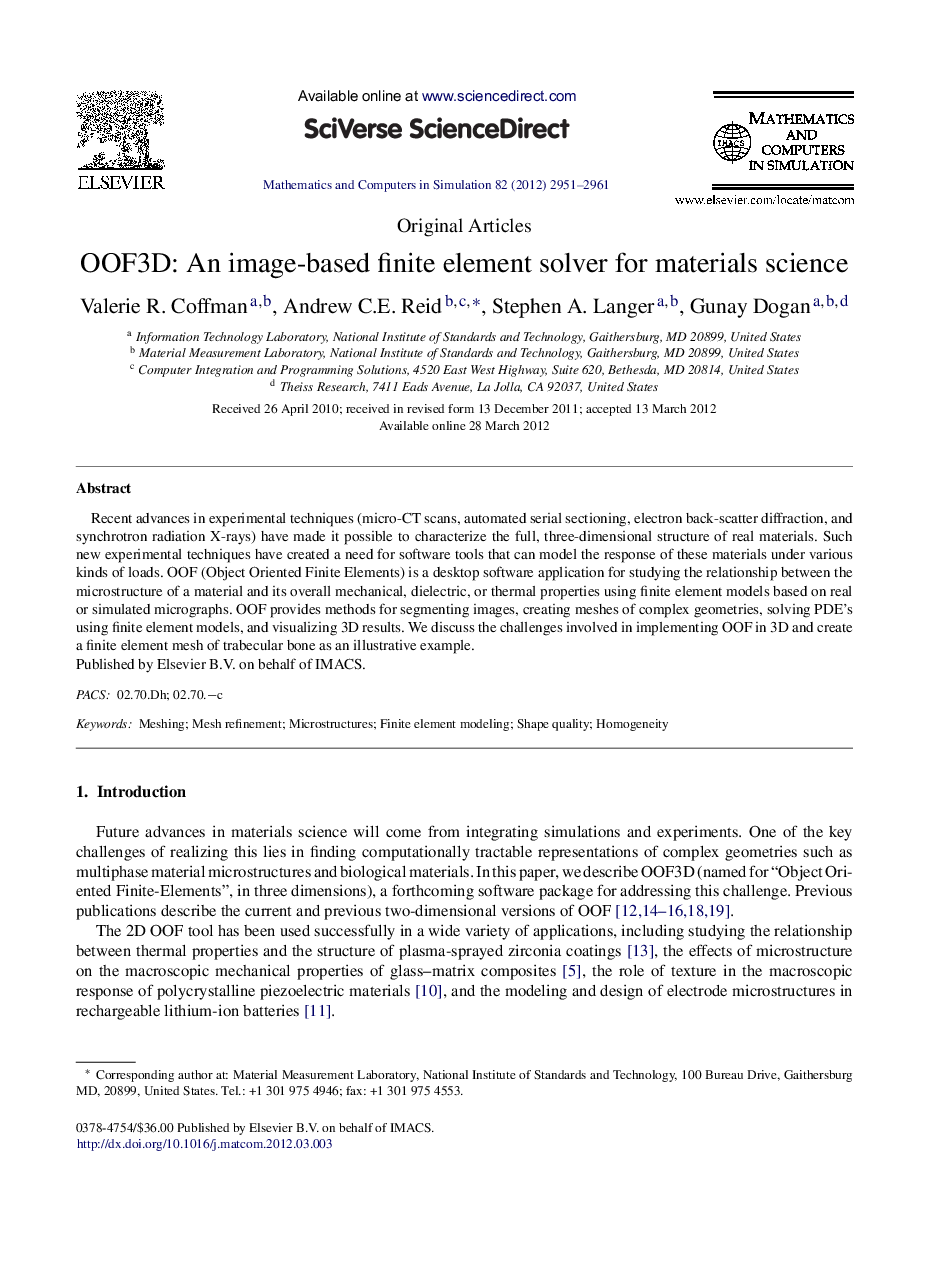| Article ID | Journal | Published Year | Pages | File Type |
|---|---|---|---|---|
| 1140019 | Mathematics and Computers in Simulation | 2012 | 11 Pages |
Recent advances in experimental techniques (micro-CT scans, automated serial sectioning, electron back-scatter diffraction, and synchrotron radiation X-rays) have made it possible to characterize the full, three-dimensional structure of real materials. Such new experimental techniques have created a need for software tools that can model the response of these materials under various kinds of loads. OOF (Object Oriented Finite Elements) is a desktop software application for studying the relationship between the microstructure of a material and its overall mechanical, dielectric, or thermal properties using finite element models based on real or simulated micrographs. OOF provides methods for segmenting images, creating meshes of complex geometries, solving PDE's using finite element models, and visualizing 3D results. We discuss the challenges involved in implementing OOF in 3D and create a finite element mesh of trabecular bone as an illustrative example.
